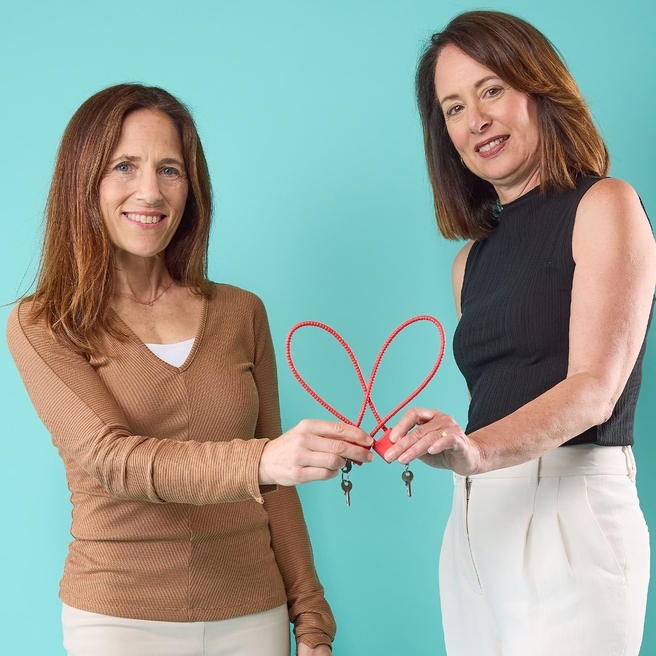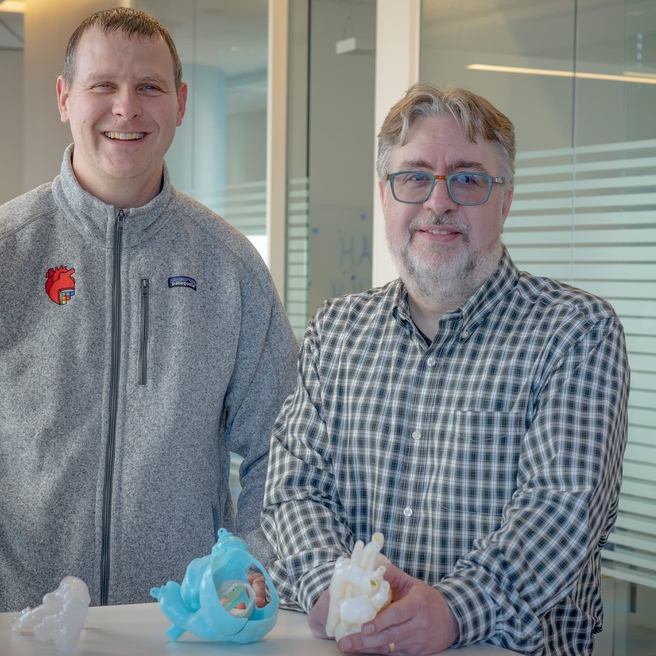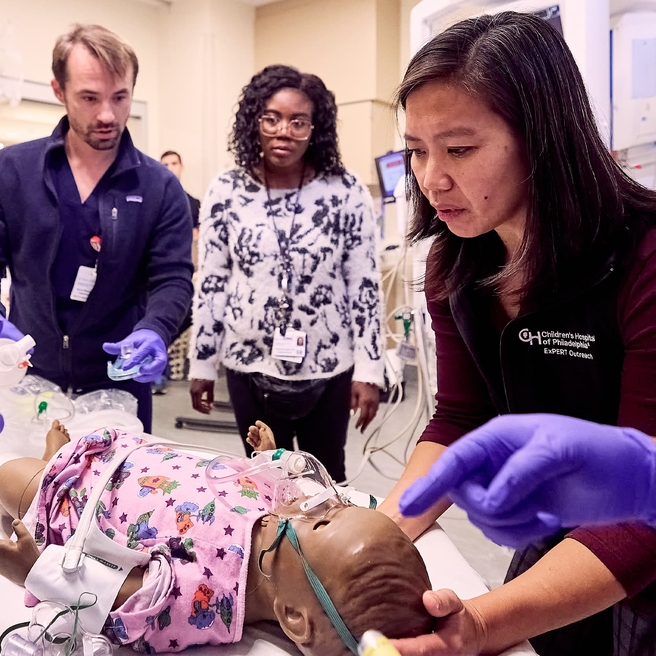
In an emergency department setting, providing the best care hinges on being ready: having the right supplies and medicines on hand, and being trained to know how to use them when minutes count.
Most emergency departments are highly prepared and extremely skilled at what they do again and again: care for adult patients. Up to 95% of emergency department patients are adults. But how can the staff members be prepared for the 5% or so of patients who are children, when the doctors and nurses aren’t able to rely on deep familiarity and “muscle memory” to treat them?
Craig Turner, DO, has been the Director of Emergency Medicine at Virtua Marlton Hospital in New Jersey for six years. His team sees a lot of severely ill adults. But as he notes, the “hospital” sign on the building is going to draw anyone needing critical care. “We know that pediatric patients will show up in our facility from time to time,” Dr. Turner says. “And we know that for pediatric readiness in emergency departments, we need to take an active approach.”
To be actively ready for when a child comes through their doors, many emergency departments in the Philadelphia region have an unsurpassed resource nearby: They turn to an outreach training program conducted by Children's Hospital of Philadelphia.
The right equipment for children
For years, CHOP Pediatric Emergency Medicine faculty have been asked to conduct training sessions in places where pediatric emergencies don’t happen very often. “These were one-off, ad-hoc requests that we were happy to fulfill, but the demand became greater,” says Yen Tay, MD, an attending physician and the Director of Simulation, Division of Emergency Medicine, at CHOP. It made sense to formalize the training program and, in the process, collect data to document this vital work CHOP is doing in the community.
In 2023, the CHOP Outreach Center for Expertise in Pediatric Emergency Readiness and Training (ExPERT) was established to expand the effort to provide high-quality pediatric emergency readiness and training to healthcare providers in the region. Dr. Tay, the Medical Director of the ExPERT Center, emphasizes the importance of bringing the CHOP team into the clinical spaces of these community institutions: “We’re increasing their readiness by training in their familiar environment with the equipment they have — and making sure everybody knows where the equipment is located and how to use it.”
An ExPERT session in action
Recently, the emergency department in Penn Medicine’s hospital in West Philadelphia asked ExPERT for pediatric training. The CHOP team brought a child-size computerized medical manikin that was programmed to replicate specific medical emergencies, such as a seizure. Attended by about a dozen Penn doctors, nurses and physician assistants, the session took place in one of the hospital’s emergency department bays.
The training began with the “parent” (played by Dr. Tay) yelling out, “Can somebody help my baby?” The Penn team jumped into action, calling out the child’s vital signs and discussing what medications to administer.
A major difference between treating adults and children involves drug dosages. In contrast to standardized adult dosages, for children the drug dosages are determined by the child’s weight — which has a wide range, from an infant to a teen. Clinicians less familiar with pediatric patients often rely on a color-coded measuring tape that corresponds to an estimated weight, and then provides correct dosages for emergency medications and correct sizes for equipment. During the simulation, not everyone on the Penn team was familiar with how to use the color-coded system.
“Going through these sessions reminds people that kids are not little adults and require special considerations,” Dr. Tay says. Some teams trained by ExPERT have discovered that the lesser-used pediatric equipment, such as child-size endotracheal tubes, may be stored in an inconvenient or unknown place. And like drug dosages and equipment sizes, certain treatment protocols for adults should not be applied to children. Dr. Tay gives the example of head injuries: “Adults almost always get a CAT scan for any head injury. But in kids, most head injuries are relatively minor, and children are less likely to have underlying conditions that could increase the risk for bleeding in the brain. We want to be judicious about radiation exposure early in life. So we use evidence-based pediatric guidelines that help us determine the risks of benefits of a CAT scan for a kid.”
Lessons learned
Dr. Turner’s staff in New Jersey also recently underwent ExPERT training. “I want our team to have some opportunity in our own department to make sure we are prepared as much as we can be for these infrequent occurrences,” he says. Working with a manikin, he notes, is both nonthreatening and realistic: “Even in a simulation situation, the team is a little nervous.”
They came away with several key lessons. If a child is having a severe asthma attack, “We learned that we can use an Epipen Jr. injection,” Dr. Turned explains. “I thought that was a tremendous pearl.” Another takeaway involved a specific person they usually don’t deal with: the frightened parent. “With the parent at the bedside, it’s more uncomfortable for the team, but it’s certainly better for the parent to see what’s going on. We learned you should assign someone other than the physician to talk to the parent — to gather information and keep them informed.”
Beyond emergency departments
ExPERT conducts training beyond emergency departments. They get requests from pediatricians’ offices and from newborn intensive care units, whose staff might want to practice what to do when faced with the unexpected. ExPERT also trains EMTs who respond to 911 calls. They have begun training all 400 of the Philadelphia Fire Department’s EMTs and medics using four-hour sessions made up of education, skills practice and simulation.
Dr. Turner sums it up: “These CHOP simulations enable us to be better prepared and help reduce anxiety in high-intensity situations when treating critically ill children. This experience is incredibly valuable.”
Featured in this article
Experts
Specialties & Programs
In an emergency department setting, providing the best care hinges on being ready: having the right supplies and medicines on hand, and being trained to know how to use them when minutes count.
Most emergency departments are highly prepared and extremely skilled at what they do again and again: care for adult patients. Up to 95% of emergency department patients are adults. But how can the staff members be prepared for the 5% or so of patients who are children, when the doctors and nurses aren’t able to rely on deep familiarity and “muscle memory” to treat them?
Craig Turner, DO, has been the Director of Emergency Medicine at Virtua Marlton Hospital in New Jersey for six years. His team sees a lot of severely ill adults. But as he notes, the “hospital” sign on the building is going to draw anyone needing critical care. “We know that pediatric patients will show up in our facility from time to time,” Dr. Turner says. “And we know that for pediatric readiness in emergency departments, we need to take an active approach.”
To be actively ready for when a child comes through their doors, many emergency departments in the Philadelphia region have an unsurpassed resource nearby: They turn to an outreach training program conducted by Children's Hospital of Philadelphia.
The right equipment for children
For years, CHOP Pediatric Emergency Medicine faculty have been asked to conduct training sessions in places where pediatric emergencies don’t happen very often. “These were one-off, ad-hoc requests that we were happy to fulfill, but the demand became greater,” says Yen Tay, MD, an attending physician and the Director of Simulation, Division of Emergency Medicine, at CHOP. It made sense to formalize the training program and, in the process, collect data to document this vital work CHOP is doing in the community.
In 2023, the CHOP Outreach Center for Expertise in Pediatric Emergency Readiness and Training (ExPERT) was established to expand the effort to provide high-quality pediatric emergency readiness and training to healthcare providers in the region. Dr. Tay, the Medical Director of the ExPERT Center, emphasizes the importance of bringing the CHOP team into the clinical spaces of these community institutions: “We’re increasing their readiness by training in their familiar environment with the equipment they have — and making sure everybody knows where the equipment is located and how to use it.”
An ExPERT session in action
Recently, the emergency department in Penn Medicine’s hospital in West Philadelphia asked ExPERT for pediatric training. The CHOP team brought a child-size computerized medical manikin that was programmed to replicate specific medical emergencies, such as a seizure. Attended by about a dozen Penn doctors, nurses and physician assistants, the session took place in one of the hospital’s emergency department bays.
The training began with the “parent” (played by Dr. Tay) yelling out, “Can somebody help my baby?” The Penn team jumped into action, calling out the child’s vital signs and discussing what medications to administer.
A major difference between treating adults and children involves drug dosages. In contrast to standardized adult dosages, for children the drug dosages are determined by the child’s weight — which has a wide range, from an infant to a teen. Clinicians less familiar with pediatric patients often rely on a color-coded measuring tape that corresponds to an estimated weight, and then provides correct dosages for emergency medications and correct sizes for equipment. During the simulation, not everyone on the Penn team was familiar with how to use the color-coded system.
“Going through these sessions reminds people that kids are not little adults and require special considerations,” Dr. Tay says. Some teams trained by ExPERT have discovered that the lesser-used pediatric equipment, such as child-size endotracheal tubes, may be stored in an inconvenient or unknown place. And like drug dosages and equipment sizes, certain treatment protocols for adults should not be applied to children. Dr. Tay gives the example of head injuries: “Adults almost always get a CAT scan for any head injury. But in kids, most head injuries are relatively minor, and children are less likely to have underlying conditions that could increase the risk for bleeding in the brain. We want to be judicious about radiation exposure early in life. So we use evidence-based pediatric guidelines that help us determine the risks of benefits of a CAT scan for a kid.”
Lessons learned
Dr. Turner’s staff in New Jersey also recently underwent ExPERT training. “I want our team to have some opportunity in our own department to make sure we are prepared as much as we can be for these infrequent occurrences,” he says. Working with a manikin, he notes, is both nonthreatening and realistic: “Even in a simulation situation, the team is a little nervous.”
They came away with several key lessons. If a child is having a severe asthma attack, “We learned that we can use an Epipen Jr. injection,” Dr. Turned explains. “I thought that was a tremendous pearl.” Another takeaway involved a specific person they usually don’t deal with: the frightened parent. “With the parent at the bedside, it’s more uncomfortable for the team, but it’s certainly better for the parent to see what’s going on. We learned you should assign someone other than the physician to talk to the parent — to gather information and keep them informed.”
Beyond emergency departments
ExPERT conducts training beyond emergency departments. They get requests from pediatricians’ offices and from newborn intensive care units, whose staff might want to practice what to do when faced with the unexpected. ExPERT also trains EMTs who respond to 911 calls. They have begun training all 400 of the Philadelphia Fire Department’s EMTs and medics using four-hour sessions made up of education, skills practice and simulation.
Dr. Turner sums it up: “These CHOP simulations enable us to be better prepared and help reduce anxiety in high-intensity situations when treating critically ill children. This experience is incredibly valuable.”
Recommended reading
Empowering Safety with Gun Locks

From the ED to primary care offices, a CHOP program aims to reduce gun violence by distributing free gun locks.
Image-Based Precision Medicine

CHOP’s Cardiac Center harnesses new technologies to deliver individualized, patient-specific care.
When a Kid Has an Emergency, They’ll Be Ready

Many emergency departments deal primarily with adult patients. A CHOP program prepares them for when a child needs help.
Contact us
Emergency Medicine